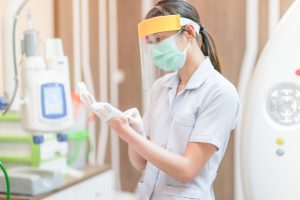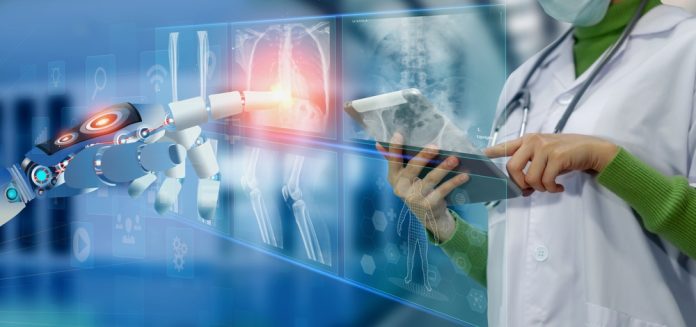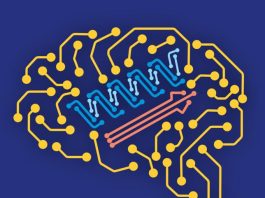Imagine a hospital where technology acts as a silent guardian, tirelessly working to keep patients and staff safe from infections.
From cutting-edge disinfection methods to predictive analytics, smart hospitals are revolutionising healthcare environments.
Navigating the intricate web of technological advancements in infection control highlights the profound impact these innovations have on shaping the future of healthcare.
An introduction to smart hospitals
Smart hospitals revolutionise healthcare delivery by integrating advanced technologies for enhanced patient care and operational efficiency.
These advancements leverage smart technology to drive digital transformation, ultimately improving patient safety and enabling innovative solutions in the medical field.
In smart hospitals, cutting-edge technology plays a pivotal role in transforming traditional healthcare practices. From digital records management to real-time monitoring systems, these innovative solutions streamline processes, reduce errors, and enhance overall patient outcomes.
Patient safety is a top priority in smart hospitals, where advanced technologies ensure the well-being of individuals under medical care.
By implementing smart sensors, wearables, and AI-driven predictive tools, healthcare providers can proactively identify and address potential risks, ultimately creating a safer environment for patients and staff.
The integration of these technologies marks a significant step forward in promoting better healthcare practices and outcomes.
Automated disinfection systems: Robots and UV-C light solutions
Utilising cutting-edge technology, automated disinfection systems employing robots and UV-C light solutions play a crucial role in maintaining cleanliness and reducing infection risks in healthcare settings.
Robot disinfection is a key component of smart technology implementation aimed at enhancing infection prevention measures. These robots are equipped with UV-C light solutions that have been proven effective in killing a wide array of pathogens, including bacteria and viruses.
The automated cleaning provided by these systems ensures thorough disinfection of various surfaces, minimising the spread of harmful microorganisms.
UV-C effectiveness is particularly significant in eliminating pathogens that are challenging to eradicate through traditional cleaning methods.
By harnessing the power of UV-C light, these automated disinfection systems offer a more advanced and efficient approach to sanitising healthcare environments.
Incorporating such innovative technologies into daily cleaning routines enhances the overall safety and cleanliness of hospitals, ultimately contributing to better patient outcomes and reduced infection rates.
Real-time monitoring and data analytics
Real-time monitoring and data analytics revolutionise infection control by providing immediate insights into healthcare environments’ pathogen levels and infection risks.
With data-driven insights and real-time surveillance, actionable data can be accessed to respond proactively to potential threats.
By employing analytics-driven strategies, hospitals can enhance monitoring and infection control measures, leading to more effective infection prevention practices.

The integration of technology in surveillance effectiveness allows for quicker identification of emerging issues, enabling timely interventions to contain outbreaks.
Through real-time data analytics, healthcare facilities can anticipate potential risks and implement proactive measures to safeguard patients and staff.
This proactive approach not only enhances infection control but also contributes to overall patient safety within the hospital setting.
Tracking patient and staff hygiene compliance
To enhance infection control efforts, hospitals use smart sensors and wearables to track patient and staff hygiene compliance. Hygiene tracking is vital for maintaining high standards of patient safety.
Wearable technology plays a crucial role in ensuring compliance monitoring by providing real-time data on hand hygiene practices and overall cleanliness.
Smart sensors embedded in these wearables can detect when staff members sanitise their hands before and after patient interactions, promoting staff accountability.
By monitoring hygiene practices, hospitals can proactively address any compliance issues, ultimately reducing the risk of infections spreading within healthcare facilities.
Wearable technology facilitates hygiene tracking and compliance monitoring, allowing hospitals to uphold stringent infection control measures and foster a healthier environment for both patients and staff.
The role of AI in predicting and preventing infection outbreaks
Smart hospitals leverage artificial intelligence to forecast and prevent potential infection outbreaks. Predictive analytics, powered by machine learning and AI algorithms, play a crucial role in infection modelling and outbreak prevention.
By analysing vast amounts of data from various sources, such as patient records, staff schedules, and environmental factors, AI can identify patterns and trends that indicate a potential outbreak before it happens.
Through sophisticated algorithms, AI can predict the likelihood of infections spreading within the hospital environment, allowing healthcare facilities to take proactive measures to prevent outbreaks.
These AI-driven predictions enable smart hospitals to allocate resources effectively, implement targeted interventions, and enhance overall infection control protocols.
IoT devices can reduce cross-contamination
IoT-enabled devices enhance contact tracing efficiency and minimise cross-contamination risks in hospital settings. Wearable trackers integrated into smart hospital devices enable real-time monitoring of staff and patient movements, aiding in rapid identification of potential infection spread.
IoT contact tracing plays a pivotal role in mapping interactions and identifying high-risk areas for targeted sanitation measures, which is crucial for effective cross-contamination prevention.
By leveraging these technologies, hospitals can implement proactive infection control strategies, such as isolating individuals who may have been exposed to contagious pathogens, thereby reducing the likelihood of widespread outbreaks.
Smart sensors embedded in wearables provide valuable data for analysing hygiene compliance among healthcare workers, enhancing overall safety protocols.
Limiting exposure in hospitals
Remote consultations and virtual check-ins offer significant advantages. They allow patients to receive medical care from the comfort of their homes, minimising the need for in-person visits.
Patient monitoring through telehealth benefits both patients and healthcare providers. It enables real-time tracking of vital signs and symptoms without the risks associated with in-hospital visits.
Remote patient monitoring not only enhances patient safety but also contributes to more efficient healthcare delivery. Embracing these technologies is crucial in mitigating in-hospital risks and creating a safer environment for both patients and healthcare workers in smart hospitals.
Challenges and future trends in technology-driven infection control
Facing the advancements in technology-driven infection control, you must address the emerging challenges and future trends in this critical healthcare domain.
Future challenges
- Adapting to evolving pathogens and antibiotic resistance.
- Ensuring interoperability among various infection control technologies.
- Balancing privacy concerns with the need for extensive data collection.
Technology trends
- Increasing use of AI and machine learning for infection prevention.
- Integration of blockchain for secure data sharing in healthcare innovations.
- Advancements in wearable technology for real-time monitoring of infections.
Healthcare innovations
- Development of smart hospital rooms with self-disinfecting surfaces.
- Implementation of predictive analytics to forecast potential outbreaks.
- Utilisation of robotics for efficient and thorough disinfection processes.
As technology continues to revolutionise infection control, staying ahead of these challenges and trends will be crucial for safeguarding patient well-being and enhancing overall healthcare outcomes.










